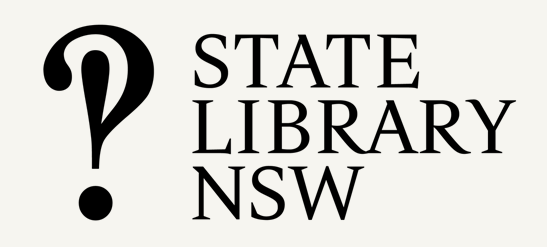Culturally safe library checklist
This is a general checklist that can be used as a starting point to assess whether your library feels culturally safe to Aboriginal and Torres Strait Islander peoples.
Entering the library:
- Are the Aboriginal and Torres Strait Islander flags on display?
- Is there an acknowledgement of the traditional owners of the land on which the library stands?
Inside the library:
- Are there any Aboriginal or Torres Strait Islander artworks on display?
- Are there Aboriginal and Torres Strait Islander staff?
- Is there a specific section for the Aboriginal and Torres Strait Islander collection?
- Are there any specific programs, events or services for Aboriginal and Torres Strait Islander clients?
- Does the library participate in significant cultural events, e.g. Indigenous Literacy Day, NAIDOC week, Sorry Day, National Aboriginal and Torres Strait Islander children’s day?
- Is an Acknowledgement of Country or Welcome to Country required for all internal and external events?
Online:
- Is there an acknowledgement of the traditional owners of the land on which the library stands on the library’s website?
- Is there a warning/disclaimer when viewing Aboriginal and Torres Strait Islander content on the library’s website or online catalogue?
Behind the scenes:
- Does the library have an Aboriginal and Torres Strait Islander collections policy?
- Are the ATSLIRN Protocols referenced in any of the library’s policies or procedures?
- Does the library have an Indigenous Services Team/Unit or Liaison Officer?
Reflection
1: Reflecting on your library’s collection
Name the collections with Aboriginal and Torres Strait Islander content material in your library that you are aware of. For each collection, consider:
- How did the library acquire it?
- How is it used by clients in the library?
- What are your experiences of providing access and managing these collections to Aboriginal and Torres Strait Islander clients/organisations/communities?
- Do any other collecting institutions, agencies or organisations have similar content that you have referred clients to for further information?
- Has there been any collaboration with these agencies/organisations to promote the existence and availability of collections?
2: Reflecting on how the collection is used
- Which of your library’s collections/materials are most used by Aboriginal and Torres Strait Islander peoples and for what purposes?
- What is the experience like when Aboriginal and Torres Strait Islander peoples come to your library for the first time? (Considering the visit from their perspective.)
- How does your library engage with the communities represented in our collections?
- What stops your library from engaging/maintaining relationships with communities?
Scenarios
1: Working with donations
- Your library has received a donation of journals and personal letters from the family of an anthropologist who spent some months living in a remote Aboriginal government reserve. The information contained in these journals and letters are the anthropologist’s own perspectives of their experiences with the local Aboriginal people in 1920. It contains information about cultural ceremonies, traditional language and the treatment they experienced from the government officials who managed the community. You discover information in a journal that contradicts another collection which the library holds.
- Which of the ATSLIRN Protocols should you consider before making this collection accessible?
- How might you seek cultural advice regarding the classification, management and accessibility of this collection ?
- Does your library have a policy/process to provide clients with an explanation of the perspectives in this collection?
- Your library has just received a suitcase of photographs as part of a deceased estate of a doctor who spent time working at a remote Indigenous government reserve. These photographs contain images of Aboriginal and Torres Strait Islander children.
How do you deal with this acquisition? Using the ATSLIRN Protocols as a reference, list the consultation process you would need to undertake within your organisation and externally.
2: Working with catalogue records
While assisting an Aboriginal client with a research enquiry, you find a photograph in your library’s online catalogue. Upon viewing the photo, she states that the description of this photograph is incorrect and say she can provide you with accurate information.
- How do you handle this response?
- What other sources of information might you consult to verify the new information?
- What policies and procedures apply to amending records in your library’s catalogue?
3: Working with communities in the library
You have been advised by your manager that a group of representatives from an Aboriginal native title organisation will be visiting the library to access material to assist them with their native title determination application.
What arrangements do you organise to ensure their experience is a positive one? What other considerations would you think are relevant when dealing with Traditional Owners?
Personal action plan
Now that we’ve covered the theory of how the ATSILIRN Protocols should inform our work with Aboriginal and Torres Strait Islander collections, it’s time to think about how you can put what you’ve learnt into practise.
What am I going to do differently?
Make your goals realistic and relevant to your role, e.g.:
- Look at a current workflow/process I use and identify which ATSILIRN Protocols need to be considered, and at what points. Share my recommendations with my manager or the owner/manager of the workflow/process.
- Talk to my team/team leader about ways we might make our public spaces more welcoming to Aboriginal and Torres Strait Islander peoples, and what it would take to make this happen.
- Update [x-number] Aboriginal or Torres Strait Islander items in our catalogue (or recommend the changes to be made), in accordance with the relevant ATSILIRN Protocols.
| Timeframe | Goal |
| Next week | |
| Within one month | |
| Within three months |
Things to consider
- Who can help me achieve these goals?
- Who/what might get in my way
- Is there any additional support (i.e. training, course, mentoring) that can help me achieve these goals?
- Name one person that you can discuss your goal(s) with and make a commitment to do so within the next three days.
90-day follow up
Assess your progress:
- How well did you accomplish your objectives?
- What in your work environment supported you in achieving your goals?
- What in your work environment blocked you from achieving your goals?
- What ongoing goal(s) will you now strive to achieve?









